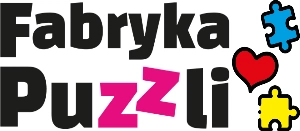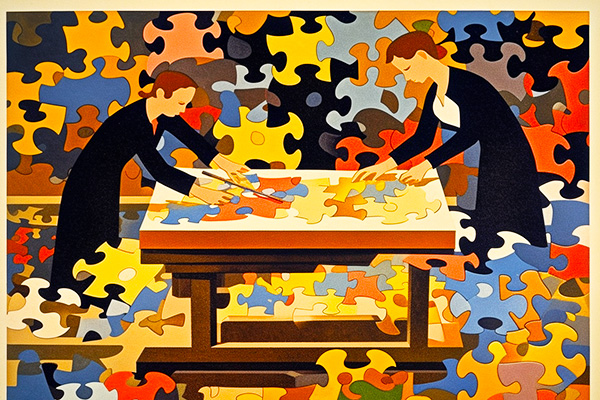Production of puzzles and other cardboard products for children - the secrets of printing technology
2023-04-12 23:58:00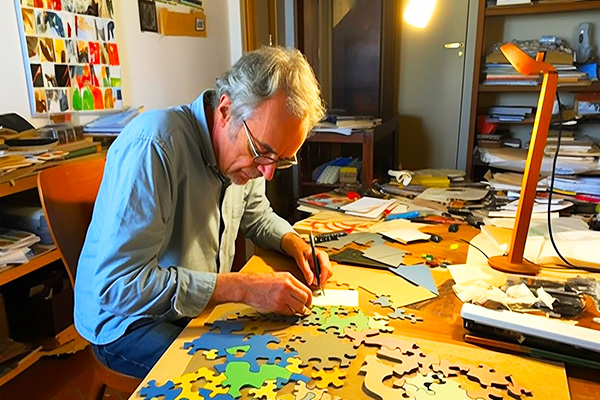
Introduction to the world of puzzle factories
In the world of children's toys, puzzles, dominoes, memory games, and lotto are not only popular but also have a similar production process. Discover the secrets of printing technology used in the production of these products, and learn about the processes they go through to become attractive to children.
Table of contents of the article:
Part I of the article - Designing puzzles and jigsaw puzzles before starting production at the manufacturer
Part II of the article - Production of traditional and custom jigsaw puzzles
Part III of the article - Custom production possibilities - Types and varieties of cardboard puzzles for children
Part IV of the article - Contract manufacturing and other cardboard products for children
Part V of the article - Personalization and educational aspects of cardboard products for children
Part VI of the article - Wooden puzzles: an interesting alternative to traditional paper puzzles
Part VII of the article - Puzzles for everyone: Combining mass production, customization, and collaboration with publishers
Part VIII of the article - Create your own puzzles and products for children - summary
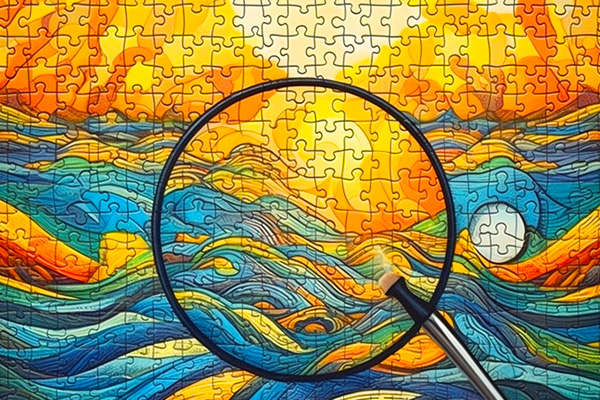
I - Designing puzzles and jigsaw puzzles before starting production at the manufacturer
Before starting the production of puzzles and jigsaw puzzles, it is crucial to properly design their graphics, considering future die-cutting and technology. Here are some essential aspects of this process:
1. Choosing the right motif and composition
The first step is to choose an attractive and age-appropriate graphic motif. It is essential to ensure proper image composition, color balance, and legibility of elements that will be cut out using a die cutter in the future.
2. Preparing the project for production - preliminary production planning
The graphic designer developing the puzzle or jigsaw project must consider the specifics of printing technology and the technical capabilities of die-cutting machines. This includes the appropriate image resolution, file format, and the use of the correct color palette.
3. Designing the puzzle die cutter and packaging
In collaboration with the manufacturer, the graphic designer must develop a die cutter that will be precisely matched to the graphics. It is essential to consider the size and shape of individual elements and maintain adequate gaps between them to ensure a smooth cutting process.
4. Considering the specifics of the material for puzzles and the production environment
The designer should consider the specifics of the cardboard from which the puzzles or jigsaw puzzles will be made. This means understanding its properties, such as thickness, strength, and susceptibility to deformation, and adapting the design to these parameters.
5. Testing the project and making corrections
Before starting large-scale production, it is worth conducting tests on a small batch of puzzles or jigsaw puzzles. This will allow checking the print quality, cutting precision, and overall product quality. Based on the test results, the graphic designer can make any necessary corrections to the project.
6. Collaborating with the production team
It is essential for the graphic designer to maintain close cooperation with the production team to achieve the best results. Thanks to this collaboration, it is possible to adapt the project to technological requirements, effectively solve any problems, and achieve satisfying results in terms of aesthetics and product quality.
7. Ensuring educational aspects and safety for specific orders
During the design of puzzles and jigsaw puzzles, the graphic designer should also consider the educational aspects and safety of the products. This includes matching the difficulty level to the age group, selecting appropriate themes, and using non-toxic paints and materials. Additionally, it is essential to avoid small and sharp elements that may pose a danger to children.
8. Care for the ecological aspects of the puzzle design
Nowadays, environmental care is becoming increasingly important, so it is worth paying attention to the ecological aspects of the design. This can be achieved by using environmentally friendly materials such as recycled cardboard, water-based paints, or eco-friendly packaging.
9. Monitoring production and quality control of puzzles
During the production process, the graphic designer should monitor the production progress and control the quality of the puzzle and jigsaw execution. This way, any potential issues or errors can be quickly addressed, avoiding costly corrections. In summary, designing puzzles and jigsaws before starting production is a crucial step that determines the quality, attractiveness, and functionality of the finished product. Collaboration between the graphic designer and the production team, as well as considering the specifics of technology and materials, is essential to create a product that is not only aesthetically pleasing but also child and environmentally friendly.
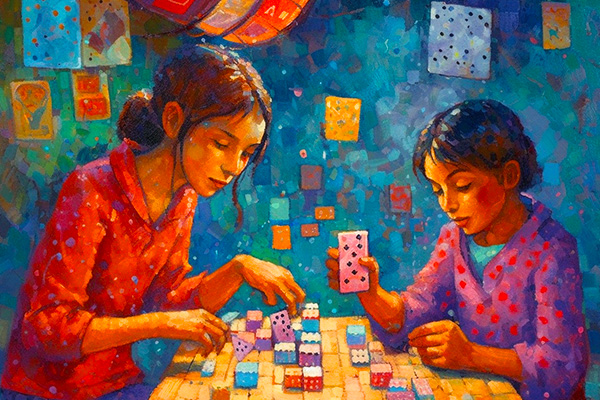
II - Production of traditional puzzles and custom jigsaws
Puzzle production is a process consisting of several stages, such as:
-
Printing puzzle prints (obverse and possibly reverse)
An important step is the printing of puzzle prints, where the obverse and reverse are printed on cardboard. Offset printing is the most commonly used technology for larger quantities. To achieve high-quality printing, graphic files must be in the appropriate color profile, i.e., CMYK. This ensures the correct color reproduction. For smaller runs, there are alternative methods of printing puzzles, such as:
- Photo puzzles by sublimation: this printing technique is suitable for individual orders or small quantities. Sublimation involves transferring the image from paper to a special puzzle surface using high temperature. Sublimation provides durable and vivid colors, but its application is limited to puzzles made of materials that accept sublimation, such as special polyester coatings.
- Wooden puzzles by UV printing: UV printing involves curing inks with ultraviolet radiation. This method allows printing on various substrates, such as wood, plastic, or metal. UV printing can be used for small runs of wooden puzzles, offering high quality and durability of the image.
- Digital printing: digital printing is increasingly used for low-volume orders. It allows for quick and flexible print preparation while maintaining high image quality. For puzzles, digital printing can be used on both cardboard and other materials. It is an excellent option for individual orders, personalized gifts, or special edition puzzles.
-
Refining puzzle prints
Refinement is a process that enhances the aesthetic and mechanical properties of puzzles. Dispersion varnish, matte or gloss, and UV varnish are used here. Lamination of puzzles is rarely used for safety reasons.
-
Puzzle laminating (joining prints with cardboard)
Laminating is a stage in which the obverse and reverse of the puzzle are joined with cardboard to achieve the appropriate thickness of the product. Experience is key to ensure that the obverse and reverse are perfectly aligned.
-
Puzzle aging
Aging allows moisture to escape from the glue and the connection to set. Puzzles are dried for about two weeks to avoid distortion and warping of the surface.
-
Puzzle die-cutting
Die-cutting is the process of cutting puzzle pieces according to a prepared pattern. Puzzle machines use force to perfectly cut each piece. The puzzle die is essential for obtaining the correct shape and size of the puzzle.
-
Crushing and packaging puzzles
The final stage is crushing the puzzles and packing them into appropriate boxes. Borders (overflows) in the form of frames are removed, and then the elements are packed.
Depending on the geometry and size of the puzzles, the crushing process can be carried out manually or mechanically. In the case of automatic crushing, special machines are used that gently and precisely separate the puzzle pieces from the overflows.
Once the puzzles are broken, they move on to the next stage - packaging. Packages are prepared with attention to aesthetics and durability, as they are meant to protect the product from damage and attract customers' attention on store shelves. Packages are usually made of corrugated or solid cardboard, with appropriately designed graphics that reflect the contents of the box.
-
Quality control and shipping
Before shipping the finished puzzles to customers, each product undergoes quality control. This helps to eliminate potential production errors, such as incomplete puzzles or damaged pieces. Quality control is carried out by experienced employees who thoroughly check each puzzle piece and packaging.
After quality control is completed, the puzzles are packed into cartons and shipped to customers. A company producing puzzles and other cardboard products for children can handle both wholesale and retail orders, delivering their products to stores, schools, kindergartens, or directly to individual customers.
-
Eco-friendly and sustainable approach to the production of cardboard products for children
Nowadays, more and more attention is paid to ecology and sustainable development. Producers of puzzles and other cardboard products for children also strive to minimize the negative impact on the environment. In practice, this means using environmentally friendly materials, such as recycled cardboard or eco-friendly printing inks.
In addition, many companies in the industry focus on packaging made of biodegradable or recycled materials to reduce the amount of waste generated. These initiatives contribute to reducing the carbon footprint and protecting natural resources, which is crucial from the perspective of long-term sustainable business in the market.
III - Custom Production Possibilities - Types and Kinds of Cardboard Puzzles for Children
Cardboard puzzles for children are not only classic puzzles but also many other types of toys that develop manual, logical, and creative skills. Here are some examples:
- Memo - a game in which children learn concentration, memory, and practice perceptual skills by discovering pairs of identical images on flipped cards.
- Domino - a classic cardboard game that involves matching pieces with appropriate numbers or patterns. This game develops mathematical, logical, and strategic skills.
- Lotto - a game in which children learn to recognize images, symbols, or numbers, matching them to their board. Lotto develops perceptual skills, memory, and association abilities.
- Picture cards - sets of cardboard cards with various images that can be used for educational games, such as learning words, categories, or memory and concentration exercises.
- Guess what? - a game in which children have to guess what the image on the cards represents by asking questions about the object's features. This game develops communication skills, vocabulary, and imagination.
- Mazes - cardboard games that involve finding a way through a complicated maze. Children learn problem-solving and develop spatial and strategic skills.
- Sequential puzzles - games that involve arranging elements in the correct order, e.g., by height, colors, or other criteria. Children learn logical thinking and develop analytical skills.
- 3D puzzles and models - cardboard models that children assemble into three-dimensional structures, such as buildings, vehicles, or animals.
- Tangrams - a Chinese puzzle consisting of 7 shapes that can be arranged in various figures. Children learn to recognize shapes, understand proportions, and spatial relationships.
- Pentomino - a puzzle consisting of 12 pieces that can be combined in various shapes and patterns. It helps children develop logical thinking and spatial abilities.
- Magnetic puzzles - cardboard puzzles with magnets that can be attached to magnetic surfaces, such as boards or refrigerators. Children learn to create various images and constructions while experimenting with magnetic forces.
- Floor puzzles - larger puzzles designed to be assembled on the floor, engaging the child's whole body in the play process. They usually have larger and thicker pieces, making manipulation and grasping easier for children. Floor puzzles can depict various themes, such as maps, animals, or vehicles.
- Sensory puzzles - a type of puzzle aimed at stimulating a child's senses, such as touch, sight, or hearing. Elements of these puzzles may contain various textures, materials, or interactive elements, such as buttons, beads, or sounds. Sensory puzzles help children develop visual-motor coordination and sensitivity to various sensory stimuli, particularly important for children with sensory disorders. Sensory puzzles can also support children's emotional and social development, introducing elements of cooperation and communication in the play process.
- Puzzles with a hole (puzzles in puzzles) - an innovative type of puzzle in which each piece is simultaneously part of a larger image and contains a smaller image in the form of a puzzle. This allows children to assemble images at different difficulty levels, developing their manual, perceptual, and spatial thinking skills. Puzzles with a hole are especially attractive for large-sized puzzles, as they add an additional dimension of fun and challenge.
- Mosaics - puzzles in which children create images and patterns using colorful cardboard shapes. Mosaics develop manual skills, planning ability, and creativity.
- Chain-type puzzles - puzzles in which children connect cardboard pieces into chains or other shapes, learning coordination and patience in the process.
- Math puzzles - cardboard puzzles that teach children basic mathematical concepts, such as addition, subtraction, or multiplication, by combining elements in appropriate combinations.
- Letter and word puzzles - cardboard puzzles that help children learn to read and write by arranging letters and creating words.
- Logical task puzzles - cardboard toys that use various types of riddles and logical problems for children to practice their analytical skills and problem-solving abilities.
-
Tokens for educational and board games - cardboard is also an ideal material for producing tokens for various educational and board games. They can take on different shapes, colors, and patterns, depending on the theme of the game. Customizing tokens allows for the creation of unique and engaging games that are fully tailored to the needs and expectations of children. The manufacturer can adjust the size, thickness, and shape of the tokens to fulfill their function in a specific game while ensuring their durability and aesthetics.
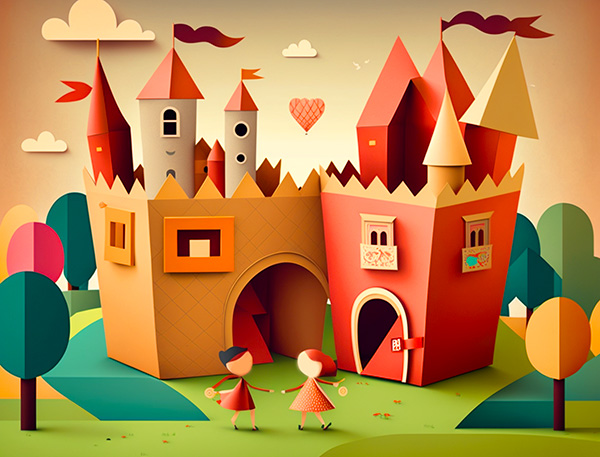
IV - Contract manufacturing and other cardboard products for children
The production of games like dominoes, memo, or lotto also goes through similar stages as puzzle production. The only difference is the shape of the die-cut, while the materials and technologies are similar. All these products require precise execution and attention to detail to ensure safety and attractiveness for children. Cardboard products for children also include many other types of toys and accessories that can be commissioned from a manufacturer. Here are some of them:
- Cardboard houses and castles - cardboard structures, such as houses, castles, or other buildings, are a great solution for children who love to play with building and creating their own spaces. Thanks to customization options, the appearance of such constructions can be tailored to individual customer preferences.
- Cardboard figurines and characters - cardboard is also an excellent material for figurines and characters from favorite fairy tales, movies, or comics, which can be used for various games and activities.
- Cardboard books - cardboard books for the youngest children are a great alternative to traditional books, thanks to their durability and safety. They can be both colorful and fun, as well as educational, conveying important information or teaching reading.
- 3D cardboard models - cardboard allows for the creation of various 3D models, such as vehicles, animals, or buildings, which can be an interesting and educational toy for children.
- Cardboard shadow theaters - cardboard shadow theaters are a creative idea for a toy that allows children to develop their imagination and tell their own stories.
- Cardboard masks - various cardboard masks, which can be personalized, are an excellent idea for fun during birthdays or other children's parties.
- Cardboard boxes and crates - practical and aesthetic cardboard boxes and crates can serve as storage for toys or other children's items while encouraging children to tidy up their space.
- Cardboard wall puzzles - large cardboard puzzles that can be hung on the wall, combining decorative and educational functions.
- Cardboard boards - cardboard boards on which children can write, draw, or attach magnets are an interesting way to encourage them to learn and experiment.

V - Personalization and educational aspects of cardboard products for children
Personalization of cardboard products for children can take various forms, adapting to the needs and preferences of customers. Here are some of them:
-
Puzzles with a custom photo
One of the most popular forms of personalization is ordering puzzles with a photo of the child, family, favorite pet, or any other chosen image. This allows for the creation of a unique product that has emotional and sentimental value.
-
Personalized educational games
Cardboard games such as dominoes, memo, or lotto can be personalized by adding children's names, selected animals, colors, numbers, or other themes. This way, children learn through play with products tailored to their interests.
-
Puzzles with custom text
Another option for puzzle personalization is adding custom text, such as quotes, proverbs, or wishes. This can also be an opportunity to teach children letters, words, or foreign languages.
-
Puzzles and games with custom graphic designs
Customers can also commission the creation of puzzles or cardboard games with an individual graphic design, e.g., with characters from favorite fairy tales, places that children would like to visit, or motifs related to their hobbies.
-
Puzzles and games of different difficulty levels
Personalization can also include adjusting the difficulty level of puzzles or games, e.g., by changing the number of pieces or applying more advanced rules. This allows for adapting the product to the child's age and abilities.
-
Puzzles and games of different shapes and sizes
Personalization can also involve the shape and size of puzzles or cardboard games. You can order puzzles in the shape of a heart, star, letter, or any other pattern, making them even more attractive to children. Personalizing puzzles and other cardboard products for children allows adapting them to individual needs and interests, increasing their educational and emotional value. This way, children have greater motivation to learn through play, and parents can enjoy the satisfaction of choosing the right product for their child.
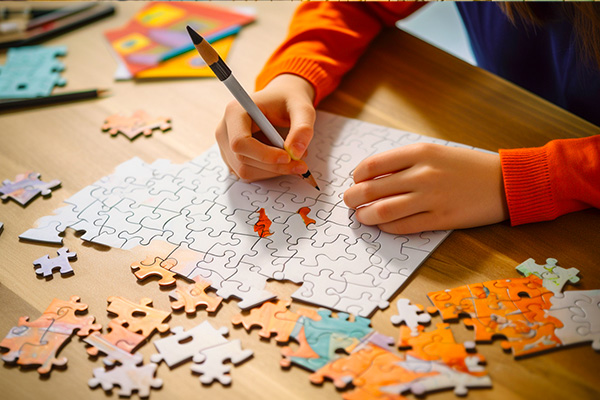
VI - Wooden puzzles: an interesting alternative to traditional paper puzzles
In the world of children's toys, puzzles have long held a special place, teaching patience, observation, and developing manual and logical skills. Traditional cardboard puzzles are the most common choice for parents and children. However, there is an interesting alternative that is gaining increasing popularity - wooden puzzles.
Advantages of wooden puzzles:
- Durability: Wooden puzzles are much more durable than paper ones, thanks to their strength and resistance to damage.
- Eco-friendliness: Wood is a natural and renewable material, making these puzzles more environmentally friendly compared to their cardboard counterparts.
- Pleasant to the touch: Wooden puzzles have a pleasant texture, which further engages the sense of touch during play.
Variety of patterns, shapes, and difficulty levels:
- Wooden puzzles are available in a wide range of patterns, shapes, and sizes, allowing for the adaptation of the toy to the child's needs and abilities.
- Difficulty levels can be adjusted by the number of pieces or the complexity of the pattern to provide a suitable challenge for children of different ages.
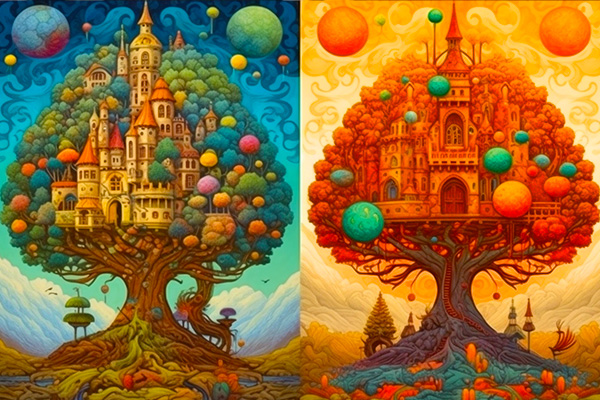
VII - Puzzles for everyone: Combining mass production, customization, and collaboration with publishers
Puzzles have been enjoying unwavering popularity among children and adults for years. It may seem that in the era of technology and increasingly advanced computer games, puzzles may lose their importance. Nothing could be further from the truth! Manufacturers have managed to develop new business models that combine mass production, customization, promotional puzzles, and collaboration with publishers to deliver unique and valuable products to their customers.
Mass production: the heart of the business
Mass production of puzzles is the foundation on which most manufacturers rely. Thanks to modern technologies, manufacturers can provide a wide selection of puzzles with varying levels of difficulty, themes, and illustrations. The availability of mass production also allows for maintaining affordable prices and makes puzzles accessible to a broad audience.
Puzzle creators: the key to unique designs
In a world where originality and uniqueness matter, puzzle creators play a crucial role. They create one-of-a-kind designs that attract customers' attention and turn puzzles into a true work of art. Collaborating with talented artists, illustrators, or photographers allows for the creation of diverse and unique projects.
Custom production: a personalized approach to the customer
Custom production is a trend that is gaining more and more popularity. Customers appreciate products tailored to their needs and preferences. Therefore, manufacturers are increasingly offering the option to order puzzles with their own photo, text, or graphics. Such products are particularly valued as original gifts or souvenirs.
Promotional puzzles: an effective marketing tool
Promotional puzzles are an excellent marketing tool that allows businesses to promote their brand, product, or service in an extraordinary way. Puzzles can showcase logos, advertising slogans, or even illustrations related to the company's offer. Promotional puzzles are not only an effective form of advertising but also engage customers interactively.
Promotional puzzles: engaging brand promotion tool
Promotional puzzles serve as a valuable tool in the context of marketing campaigns for various brands. This type of product allows businesses to creatively and engagingly reach their target audience. Promotional puzzles related to a specific campaign, besides the traditional advertising message, may also include elements related to a particular product, service, or event.
Production for publishers: collaboration with experts
Collaborating with publishers is another aspect that allows puzzle manufacturers to further develop and expand their product portfolio. Publishers often hold copyrights to popular illustrations, characters, or educational content. Partnering with publishers allows for the use of these materials in puzzle production, resulting in high-quality and attractive products for customers.
Products for publishers often have to meet additional technical requirements due to the distribution of children's products. Collaborating with publishers and sales points such as toy stores, bookstores, or toy wholesalers requires ensuring high quality and product safety. Especially when distribution is international or outside of Europe, the destination country may require different approvals or certificates.
Therefore, puzzle manufacturers must ensure compliance with all safety standards and legal regulations in the individual countries where their products are distributed. Additionally, when collaborating with publishers, it may also be important to ensure graphic consistency and use appropriate materials consistent with the publisher's image.
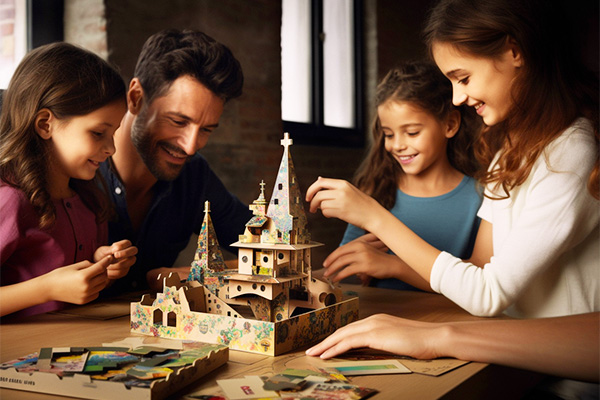
VII - Summary
The production of puzzles and other cardboard products for children is a fascinating process that combines various technologies and multi-stage transformation of raw materials into attractive and functional toys. By collaborating with a manufacturer offering contract manufacturing services, you can order not only standard puzzles but also other products such as dominoes, memo, lotto, or cardboard tokens. An important aspect of this process is attention to detail, the quality of materials, and concern for the safety of the youngest users.
Additionally, it is worth paying attention to the manufacturer's price list to be able to compare offers from different companies and choose the most advantageous one in terms of quality and price. This way, anyone interested will be able to find products that meet their requirements, not only in terms of functionality but also in terms of costs.
Furthermore, it is essential to consider the production strategy, order fulfillment planning methods, and cost calculation. For puzzle manufacturers, the planning and production management system is crucial to meet customer requirements and order fulfillment deadlines. Therefore, when choosing a production environment, the production capacity, capabilities, and lead time should also be taken into account.
Invitation to contact and place orders - Create your own puzzles and children's products
If you are interested in contract manufacturing and cooperation with a European puzzle and children's jigsaw manufacturer, please feel free to send inquiries about custom production. We are available at the following email address: hello@fabrykapuzzli.eu. Our team of experts will be happy to help you choose the right products, technologies, and personalizations to meet the requirements of your company and satisfy the youngest recipients.
In addition, we offer the possibility to place orders for both standard products and products tailored to the specific customer's order. Our production strategy and planning require taking into account various elements, such as the type of production, production planning areas, or changeover times. This way, anyone interested will be able to find products that meet their requirements, not only in terms of functionality but also in terms of costs and lead time.
